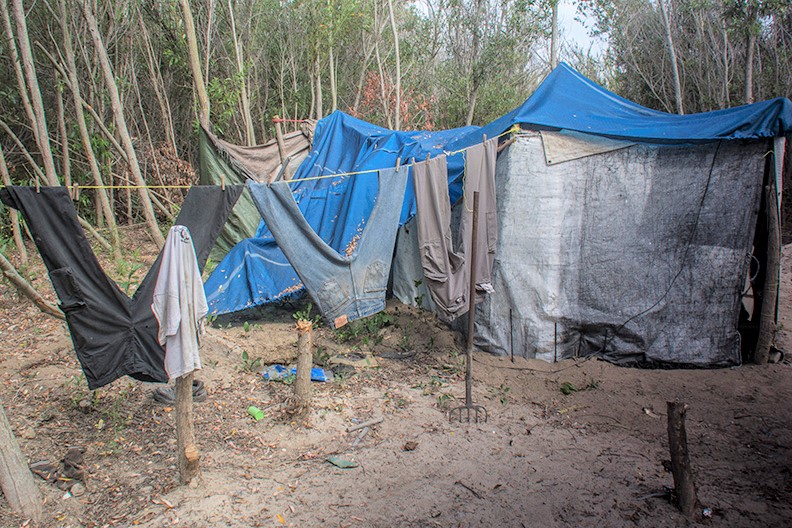A makeshift abode is typical of housing for unsheltered people living in the watershed.
by Richard Lieberman
In coming weeks, a collaborative effort to clean up the watershed will begin. The cleanup effort will concentrate on watershed cleanup, removal of homeless encampments, and relocating homeless individuals by connecting them to safe and reasonable shelter and supportive services to help individuals with longer term accommodations.
During the past several years, the population of homeless on the river bottom has increased and clearly demonstrated the need for long term solutions. The increased population of homeless people has made the problem more acute. The large population of homeless poses a real threat to public health, sanitation, and environmental health. At the same time, the on-going pandemic has caused a decrease in the number of shelter beds available, exasperating the current problem. In Ventura a chronic shortage of affordable housing contributes to the dilemma.
The county Board of Supervisors is spearheading the effort, led by the Supervisors of the impacted areas, including Supervisor Matt LaVere, ex-mayor of Ventura. They have embarked on a program that will, in the short-term, cleanup the watershed (river bottom) and address the long-term problem of homelessness.
“Supervisor Carmen Ramirez and I have taken an important first step the past few months focused on an effort to look at the encampments. We saw a significant growth in encampments and increasing crime rates in the neighborhoods around the river bottom. We saw this as a real opportunity to both tackle the cleanup from an environmental perspective and being able to provide services for those at the encampments. This week we specifically focused on the cleanup of abandoned encampments,” he said. “In three days, we removed 188 tons of trash just from the abandoned encampments,” he added.
Project Room key, an effort to lease a motel in Ventura (The Vagabond) had ended but has been extended through January of this year. The motel was able to house over two hundred unsheltered from Ventura and Ventura County. The county established a program “the coordinated entry system countywide homeless management information system” (HMIS) along with 8 one-stop service centers throughout the county that help connect individuals to housing and supportive services, including whole person care, recuperative care, food assistance, rapid housing, emergency shelters, permanent supportive housing, and transitional housing.
“This has to be a multi-pronged effort. First, let’s clean up the trash in the abandoned encampments, and for the remaining active camps we are going to do some focused efforts surveying everyone; finding out who is willing to take health services and possible shelter.” LaVere also notes “Frankly this is life saving for these individuals. If we get a rainstorm, which is going to happen, with climate change we are seeing more and more intense storms. If we get a flow through there, people could drown and die”.
There have been many efforts in the past to cleanup and evacuate unsheltered individuals from the river bottom. Still, the camps remain occupied. Just throwing them off the property will just scatter the occupants into nearby neighborhoods and commercial zones. The city, the county, and the federal government will be placing large sums of money to combat and solve the problem of homelessness in the long term. “It must be done in conjunction with housing and services in order to get a long-term solution,” added LaVere.
Perhaps this time with a major influx of city, county, state and federal financial resources we will be able to make real progress in solving the dilemma of the unsheltered encampments in the river bottom.

